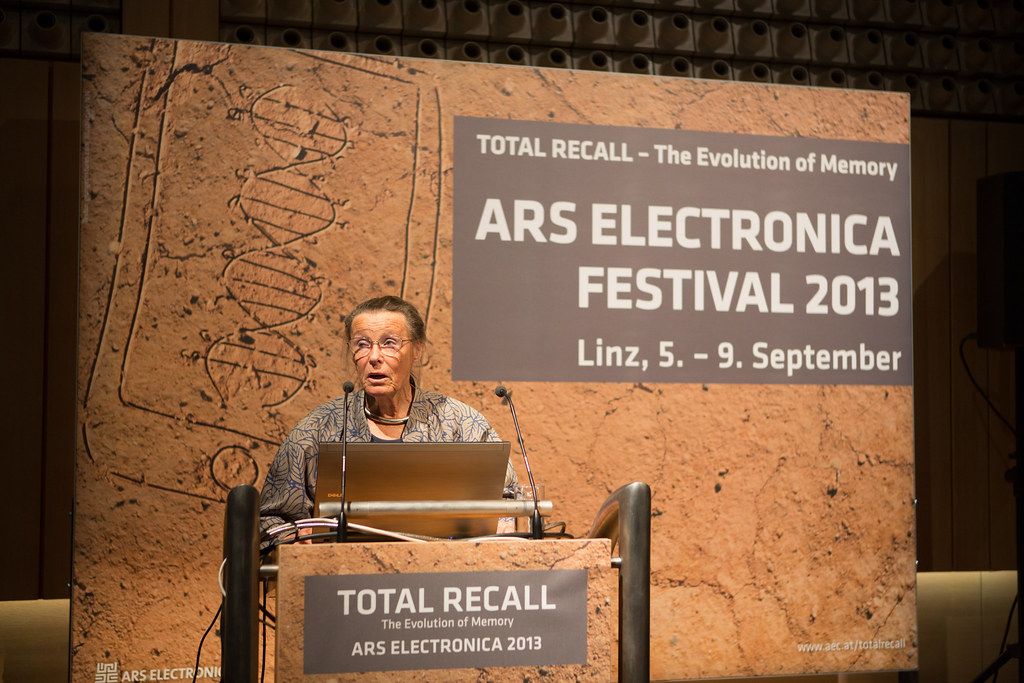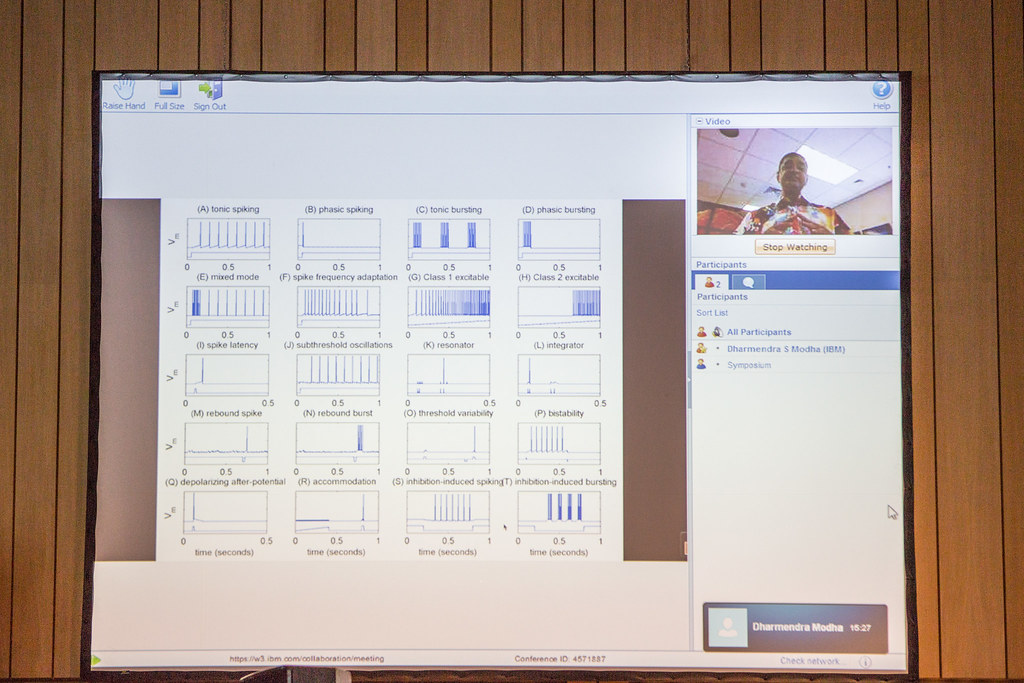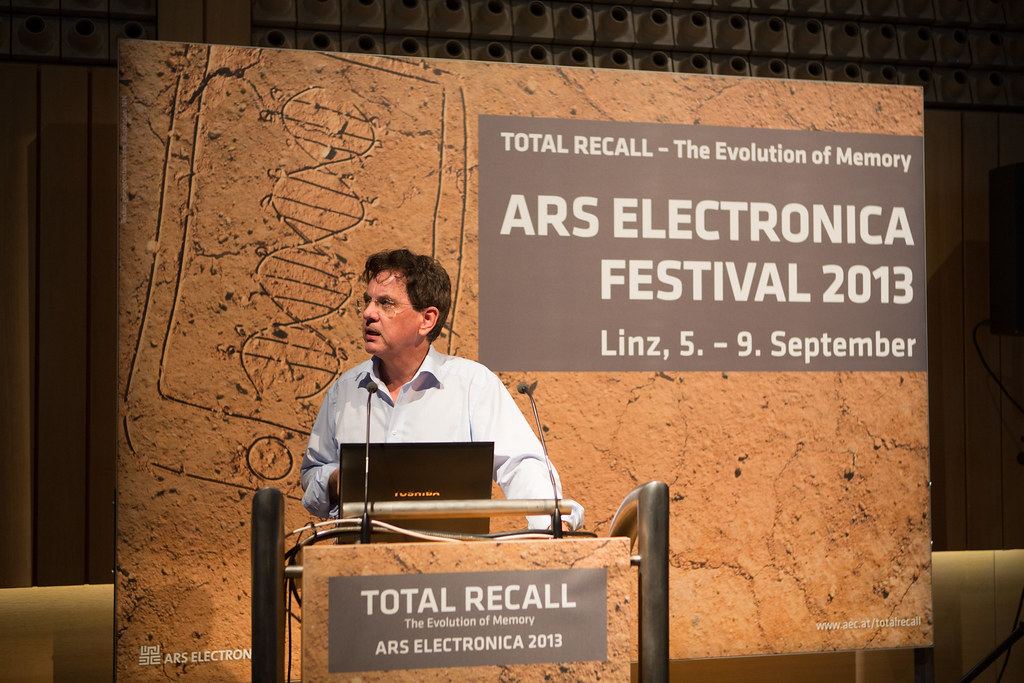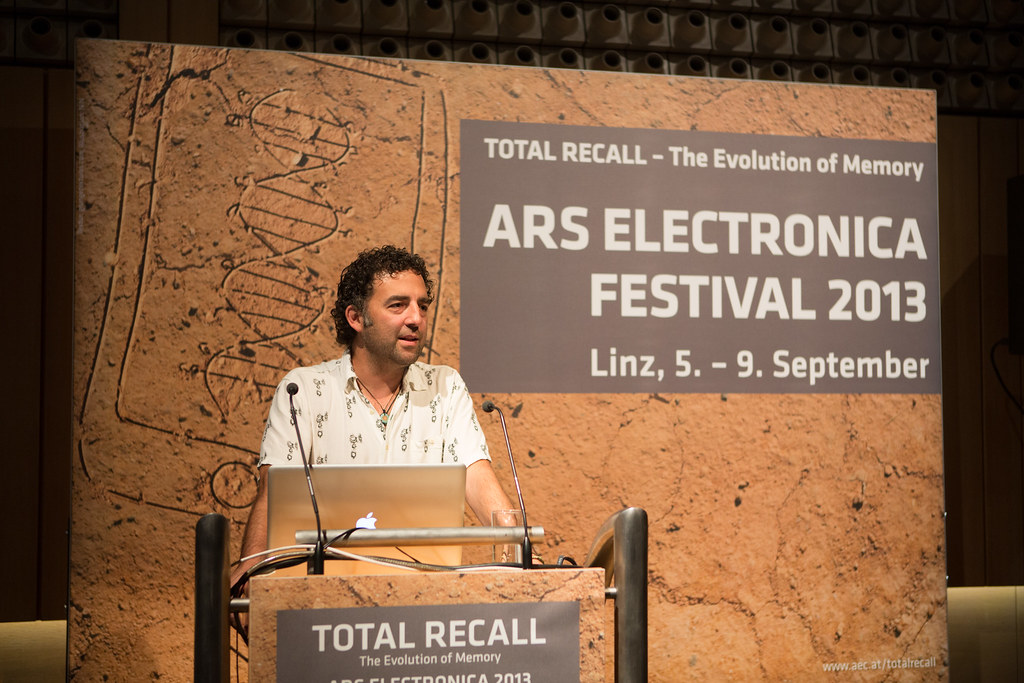Fri 6. 9. 14:30 – 18:00
Brucknerhaus
The second session begins with a consideration of nature’s memory, DNA. Biochemist Barbara Hohn will discuss the genetic and epigenetic memory of animals and plants, and particularly elaborate on how they pass on what they remember—from leaf to leaf, for instance, or from parent to offspring.
Mathematician and zoologist Nick Goldman teams up with artist Charlotte Jarvis to consider the prospects of someday using DNA as the perfect data storage medium. And nobody’s better qualified than Goldman, who was a member of a research group that succeeded in converting an mp3 file into DNA and back again.
Cognitive Computing
Another view of the future of memory focuses on the vision of someday being able to computer model human memory. The Synapse Project in the US and the Human Brain Project in Europe are at the forefront. Can a computer learn how a human being thinks? Dharmendra S. Modha, a cognitive computing specialist at IBM, is convinced of this. Via teleconference, he’ll report on his work on computer systems modeled on the human brain.
The many major challenges that have to be overcome in order to simulate the human brain are the grounds for a more skeptical view of this undertaking by Hans Ulrich Dodt, an expert in medicine, physics and bio-electronics at the Vienna University of Technology (AT).
To conclude the first day of the symposium, we’ll return to the neurosciences as well as to art. Rodrigo Quian Quiroga, head of the University of Leicester’s NeuroEngineering Lab, will talk about his research on so-called concept cells—often referred to as Jennifer Aniston neurons—and tell about how his research brought him to the works of the great Argentine author Jorge Luis Borges.
14:30 – 15:00 Barbara Hohn
15:00 – 15:25 Nick Goldman
15:25 – 15:50 Charlotte Jarvis
15:50 – 16:20 Q+A und Pause
16:20 – 16:40 Dharmendra Modha (Tele-Talk)
16:40 – 17:10 Hans-Ulrich Dodt
17:10 – 17:40 Rodrigo Quian Quiroga
17:40 – 18:00 Diskussion
Moderation: Michael Doser (AT/CH)
Fri 6. 9. 14:30 – 18:00
Brucknerhaus

Barbara Hohn (AT/CH) is a biochemist at the Friedrich Miescher Institute in Basel. Her fields of research include genetic expression and recombination as well as environmental influences on the stability of plant genomes.

Nick Goldman (UK) works at the European Bioinformatics Institute in Hinxton (UK), researching algorithms to study genome evolution. He holds degrees in mathematics and zoology from the University of Cambridge.

Charlotte Jarvis (UK) is currently artist in residence at The Netherlands Proteomics Centre. Last year they collaborated on the project Blighted by Kenning in which the Universal Declaration of Human Rights was encoded into DNA. This year Charlotte and the NPC are working on Ergo Sum, in which Charlotte will be creating a second self using body parts grown from her stem cells.

Dharmendra Modha (US) has done pioneering work in the field of artificial intelligence and memory simulation. He set up the Cognitive Computing division at IBM’s Almaden Research Center and heads the DARPA SyNAPSE project. He and his team are working on a computer system that emulates the essential functions and structures of biological brains.

Hans Ulrich Dodt (DE) is professor of solid body electronics at the Vienna University of Technology. He uses optical methods to visualize nerve cells and take 3-D flights through the transparent brain. In his interdisciplinary research field, bioelectronics, he applies approaches from astronomy to problems in neuroscience.

Rodrigo Quian Quiroga (AR) Rodrigo Quian Quiroga is the director of the Centre for Systems Neuroscience and the head of the Bioengineering Research Group at the University of Leicester. His main research interest is on the study of the principles of visual perception and memory. He discovered what has been named “Concept cells” or “Jennifer Aniston neurons”—neurons in the human brain that play a key role in memory formation.

